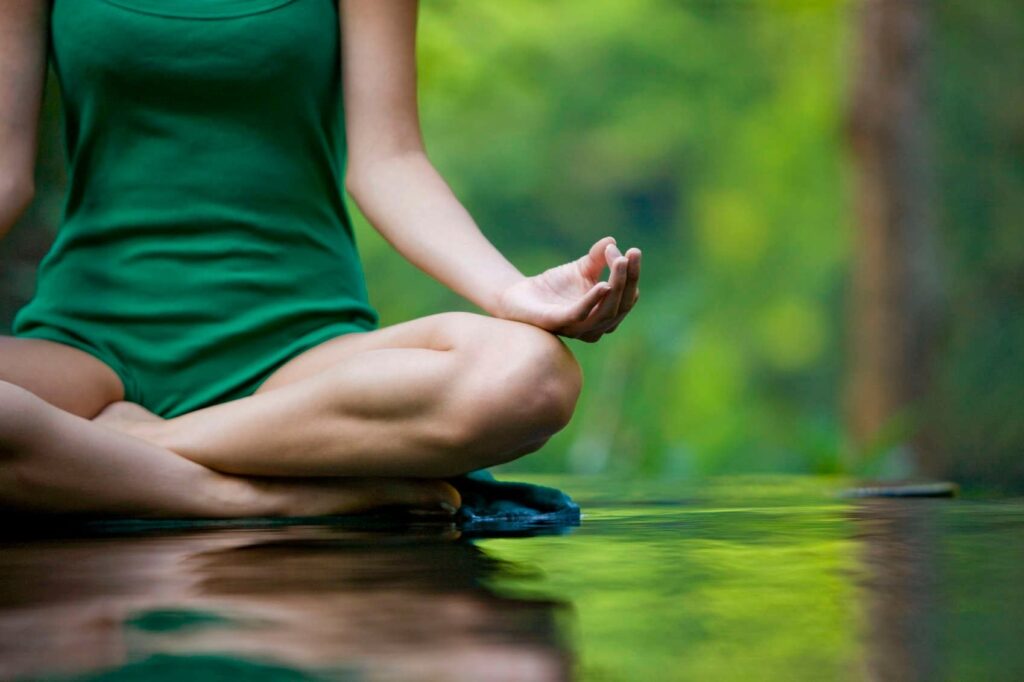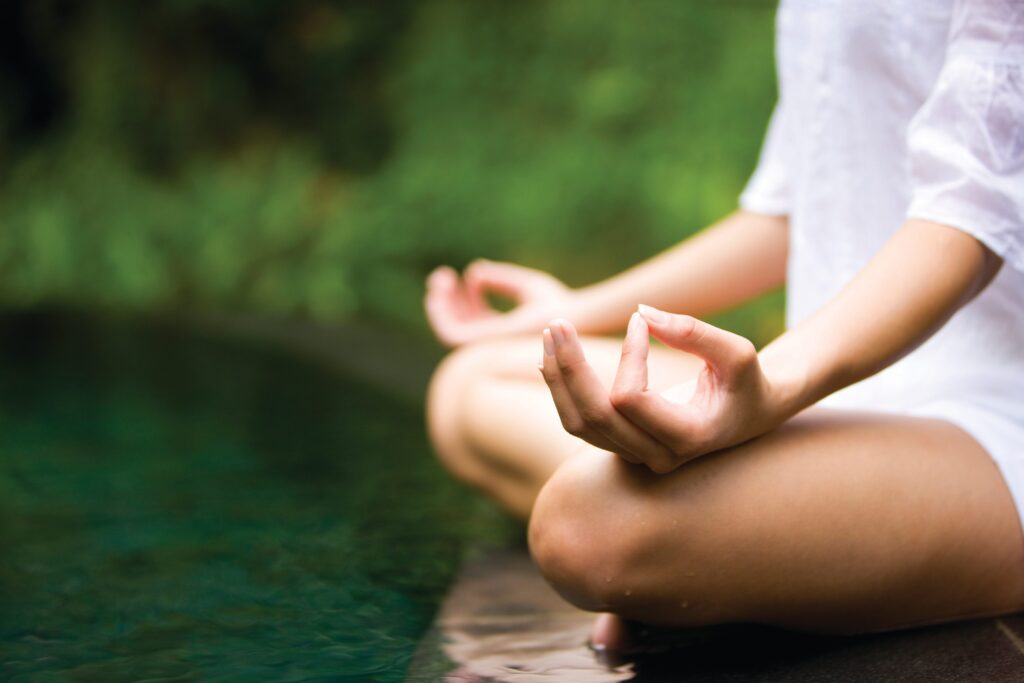Dear Friend, if you came to artofbalance.ru, it means you are ready to plunge into the wonderful world of conscious life full of harmony and depth. It’s time, that’s why you’re here.
For beginners immersion in meditative practices we have prepared the Big Guide “Meditation for Beginners”. It is convenient to come back to it when necessary and can be shared with those whom it can also help.

Meditation involves concentrating our attention, which is usually in a scattered and unfocused state. The usual state of mind is a disorderly jumping from one thought to another. And the mind often regrets the past and worries about the future. In the East such a state is called “monkey mind”, and in neuropsychology – the default state or autopilot.
Meditation returns the wandering mind to the full experience of the present, calms it down, makes perception clearer. Close self-observation allows you to know that continuous chatter is a normal activity of the mind, and you have the right to decide for yourself whether or not to follow every thought that arises. Awareness of the emotions that arise in response to thoughts gives you the opportunity to get away from the pattern of impulsive reactions and choose a wise answer that is adequate to the situation.
Meditation is a very ancient practice and was originally used in a religious context to achieve spiritual goals. Most religions of the world have their own unique contemplative traditions.
There are also many types of secular or secular meditation, devoid of religious context. This means that your religious beliefs, or lack of them, are not a hindrance to meditation practice. Most people practice meditation for their own health and well-being.
Unfortunately, there are still many myths and misconceptions about meditation that prevent people from forming their own experiences and perceptions of meditation and from experiencing its many benefits.
WHAT IS MINTFULNESS?
There are many different types of meditation. In recent decades, the most popular has become meditation mindfulness or, as is often said in Russia, consciousness practices. In the West they have become the mainstream and an important part of comprehensive care for their health and wellbeing. Today it is the most scientifically studied type of meditation.
Awareness or Mindfulness is a natural human ability to be attentive and involved in what is happening with us and around us at the present time, without automatic judgments or criticism.
Mindulness practice is a general term for various ways of attention training. The arsenal of awareness practices includes: body scanning, loving kindness meditation and many other meditations.
Mindfulness is a simple but very powerful and life-transforming practice of attention training. It is important to understand that its power is in training and application. Every event in your life, including the mental one, opens new opportunities for you to practice. By constantly training, we gradually turn our actions into a habit.
The art of conscious living can be learned by anyone. You do not need to be a Buddhist, practice yoga or go to the Himalayas. There are no restrictions for practice: it doesn’t matter your age, gender, physical abilities, religious views. However, as any art, it requires constant improvement, but simply training. And the more you improve in it, the better results you achieve.
WHY MEDITATE?
Since the 2000s, there has been a steady increase in interest in the scientific study of meditation and its impact on our brain, body and emotional well-being. The results of neuroscientists’ research are truly impressive. The practices of consciousness lead to favorable structural changes in the brain, resulting in positive changes in our lives.
The ability to regulate emotions is improved.
The impulsiveness of reactions decreases.
Increased stress tolerance, you are better prepared for stressful events.
You achieve better results in any activity thanks to the development of attention and concentration.
Relations with people reach a new level, in them appear more kindness, care, sincerity and depth.
Training attention during the practice of awareness is like working in a mental gym. It requires some effort, but it also cultivates strength and flexibility. Every time you practice, you strengthen your “awareness muscles”. The meditator gradually changes the shape and function of his brain. Awareness becomes a habit of yours.
WHAT’S STOPPING A ROOKIE FROM PRACTICING?
Let’s analyze the typical difficulties that most beginners have in meditation.
SONLIVOST
If you fall asleep during meditation, try to find out the reason why you fall asleep. Among the possible ones:

You don’t fall asleep. If you haven’t slept, you shouldn’t meditate. You’d better get a good rest. Try meditating in the morning after you wake up.
Your body is exhausted by sports activities. If your exercise is very tiring, meditate before you exercise. The second option is to reduce the intensity of your exercise. After light exercise, the mind may be more alert and wander less during meditation. Just give yourself time after exercise to recover your breath and heart rate, and then start practicing.
You meditate immediately after eating on a full stomach. Take a break between eating and practicing or meditate before eating.
You meditate lying down or in another posture that is not conducive to mind vigilance. Try meditating in a sitting position.
The mind avoids anything that you experience in meditation. If the previous reasons are not relevant, probably your mind wants to avoid a meditative state and goes into one of the usual states – thinking or dreaming. Keep focusing on the meditation object, such as breathing.
Your meditation session is too long at this stage. Master meditation gradually, don’t be too ambitious.
UNPLEASANT FEELINGS IN THE BODY
Different sensations in your body can distract you from meditation. Mark for yourself the occurrence and nature of the sensations such as tingling, itching and vibration. Then calmly direct your attention again to your breathing.
Meditation teaches us that our feelings, thoughts and feelings are one thing and our reactions to them are quite different. When we celebrate the sensations in the body, we have a choice. By choosing not to respond, you strengthen self-control. The body is trying to distract you from the practice. Don’t give in! You are the boss of this place.